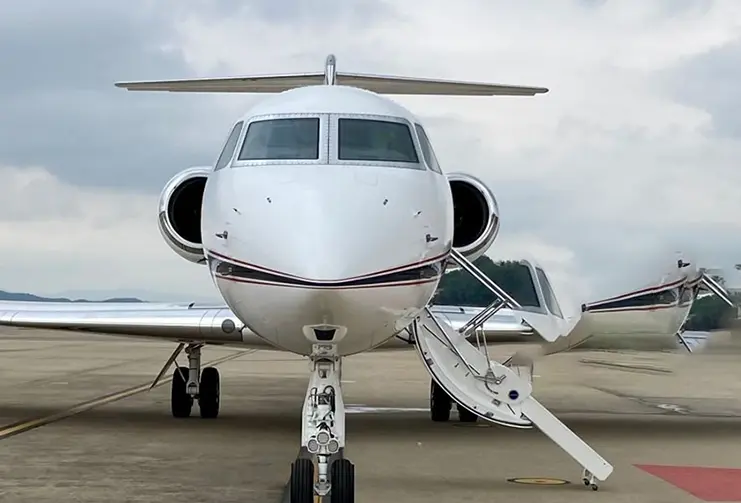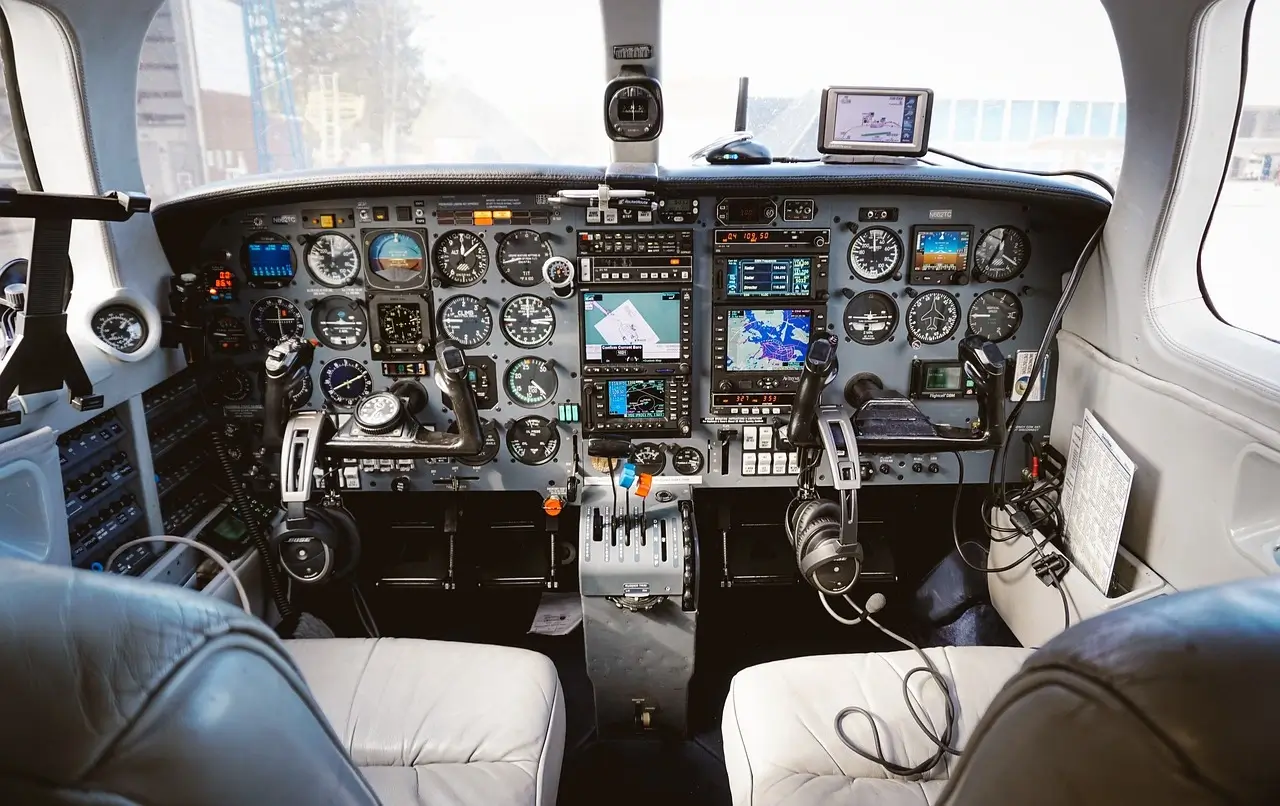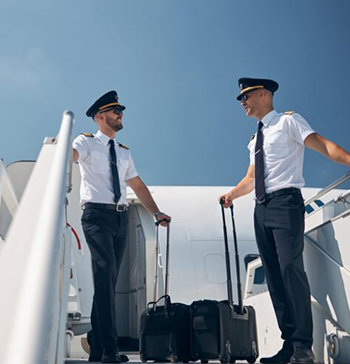
Private Pilot License (PPL)

Take Command of the Skies: Your Guide to Earning a Private Pilot License in the Philippines
Ever imagined yourself gracefully maneuvering an aircraft through fluffy clouds, the Philippine landscape unfolding beneath you? Earning a Private Pilot License (PPL) can turn that dream into a thrilling reality. This coveted license allows you to pilot single-engine airplanes for personal, non-commercial purposes, opening doors to breathtaking adventures and unforgettable experiences.
Unlocking the Freedom of Flight:
The PPL equips you with the knowledge and skills necessary to:
- Pilot a single-engine aircraft confidently and safely.
- Navigate through diverse airspace under visual flight rules (VFR).
- Communicate effectively with air traffic control and other pilots.
- Make informed decisions during various flight scenarios.
- Experience the unparalleled joy and liberation of solo flight.
Fueling Your Journey: Embarking on PPL Training:
To earn your PPL, you’ll embark on a comprehensive training program encompassing:
- Ground School: Master the theoretical foundations of flight through intensive classroom sessions covering aerodynamics, navigation, meteorology, regulations, and more.
- Flight Training: Hone your practical skills under the guidance of experienced instructors. Begin with dual lessons, gradually progressing towards solo flight experiences.
- Examinations: Demonstrate your acquired knowledge and proficiency through written and practical assessments conducted by the Civil Aviation Authority of the Philippines (CAAP).
Paving the Way: Prerequisite Checks:
Before igniting your pilot journey, ensure you meet the following criteria:
- Age: Be at least 17 years old.
- Medical Fitness: Obtain a Class 2 Medical Certificate from a CAAP-approved Aviation Medical Examiner.
- Educational Background: Possess a high school diploma or equivalent degree.
- English Proficiency: Demonstrate competency in English, the language of aviation communication.
Charting Your Course: Unveiling the CAAP Flight Training Syllabus:
The CAAP outlines a structured syllabus for PPL training, ensuring all pilots acquire the necessary skills:
- Ground School: Covers subjects like aircraft systems, principles of flight, navigation, meteorology, human factors, air law, and regulations.
- Flight Training: Includes a minimum of 40 hours of flight time, with at least 10 hours solo and 5 hours solo cross-country navigation.
Navigating the Stages of Training:
Your journey typically unfolds in these stages:
- Private Pilot Ground School: Gain theoretical knowledge from experienced instructors.
- Private Pilot Flight Training: Begin under the watchful eye of your instructor, transitioning to solo flight upon demonstrating proficiency.
- Practical Test: Showcase your acquired skills to a CAAP-designated examiner.
- License Issuance: Once you pass the tests, proudly receive your coveted PPL!
Financial Considerations: Planning Your Investment:
The exact cost of obtaining your PPL varies depending on several factors:
- Flight School: Different schools offer various program structures and pricing models.
- Location: Training costs may differ based on the school’s geographical location.
- Aircraft Availability: Hourly aircraft rental rates impact the overall cost.
- Instructor Rates: Consider the instructor’s experience and hourly charges.
Do I Need to Pay Everything Upfront?
Most flight schools offer flexible payment options to spread the cost throughout your training. Explore installment plans, scholarships, and potential financial aid to make your dream attainable.
Time Commitment: How Long Will It Take?
The duration of your PPL training depends on your dedication, available time, and learning pace. On average, expect several months, with dedicated individuals potentially completing it within 3-6 months.
Estimating the Investment: A Realistic Picture:
While exact costs fluctuate, consider this range for budgeting:
- Ground School: ₱10,000 – ₱20,000
- Flight Training: ₱700,000 – ₱750,000
- Examinations and Other Fees: ₱10,000 – ₱20,000
CAAP Requirements for Your PPL:
Remember, obtaining your PPL involves adhering to specific CAAP regulations:
- Medical Certificate: Maintain a valid Class 2 Medical Certificate.
- Logbook Maintenance: Meticulously document your flight training under instructor supervision.
- Minimum Flight Time: Meet the established minimum flight hours for ground operations, solo flight, and cross-country navigation.
- Examinations: Pass both the written and practical examinations conducted by CAAP-designated examiners.
Beyond the Basics: PPL Upgrades and Enhancements
Your PPL serves as a springboard for further exploration:
- Night Rating: Experience the magic of flying under the starry sky by adding a night rating to your license.
- Instrument Rating (IR): Master the art of navigating using instruments for challenging weather conditions or low visibility situations.
- Seaplane Rating: Expand your horizons by learning to fly seaplanes and explore stunning coastal landscapes.
- Tailwheel Endorsement: Challenge yourself with tailwheel aircraft, known for their unique handling characteristics and historical significance.
Remember, the sky’s the limit! Earning your PPL is just the beginning of your incredible aviation journey. Embrace the continuous learning, challenge yourself with new ratings, and explore the diverse opportunities this license unlocks.
Ready to Take Off?
If you’re ready to soar above the clouds and embrace the freedom of flight, take the first step! Research reputable flight schools in the Philippines, compare their programs and costs, and schedule introductory flights to experience the magic firsthand. With dedication, passion, and the right guidance, you can transform your dream of becoming a pilot into a thrilling reality.
Additional Resources:
- Civil Aviation Authority of the Philippines (CAAP): https://caap.gov.ph/
- Aircraft Owners and Pilots Association (AOPA) Philippines: https://www.philstar.com/tags/aircraft-owners-and-pilots-association-philippines
- List of Accredited Flight Schools in the Philippines: https://caap.gov.ph/wp-content/uploads/2023/10/List-of-Pilot-Maintenance-Schools-As-of-Sept.-1-2023.pdf
Start your adventure today and let the boundless skies welcome you with open arms!

Frequently asked questions
How do I get a private pilot's licence (PPL) in the Philippines?
To obtain a Private Pilot’s License (PPL) in the Philippines, you’ll need to undergo training at a Civil Aviation Authority of the Philippines (CAAP) accredited flying school. The process typically involves completing ground school training, which covers subjects like aviation theory, regulations, and navigation, followed by practical flight training with a certified flight instructor. You’ll need to meet specific requirements set by CAAP, including a minimum number of flight hours and passing written and practical exams. Additionally, you’ll need to pass a medical examination conducted by a CAAP-accredited aviation medical examiner to ensure you meet the physical requirements for piloting an aircraft.
How much does it cost to get a private pilot's license (PPL) in the Philippines?
The cost of obtaining a Private Pilot’s License (PPL) in the Philippines can vary depending on factors such as the flying school you choose, the type of aircraft you train on, and your individual learning pace. On average, you can expect to spend between PHP 700,000-PHP 750,000 for the entire training program, including ground school, flight hours, exam fees, and other related expenses. It’s essential to budget carefully and inquire about all potential costs involved before starting your training to avoid any surprises along the way.
How long does it take to get a private pilot's license (PPL) in the Philippines?
The time it takes to obtain a Private Pilot’s License (PPL) in the Philippines can vary depending on factors such as your availability for training, weather conditions affecting flight scheduling, and your ability to grasp the required knowledge and skills. On average, students can complete their PPL training within six months to a year if they train consistently and meet all the requirements efficiently. However, individual timelines may vary, and some students may take longer to complete their training due to personal or logistical reasons. It’s essential to discuss your goals and expectations with your flight instructor and develop a realistic training plan to help you stay on track.
Can I go straight to PPL?
Yes, you can go straight to pursuing a Private Pilot’s License (PPL) in the Philippines if you meet the requirements set by the Civil Aviation Authority of the Philippines (CAAP) and the flying school you choose. However, it’s important to note that obtaining a PPL requires meeting specific prerequisites, including a minimum age requirement (usually 17 years old), passing a medical examination, and demonstrating proficiency in English, as aviation communication is conducted primarily in English. Additionally, some flying schools may have their own prerequisites or recommendations, so it’s essential to inquire about their requirements before enrolling in their PPL program.
How many solo hours do you need to get a private pilot's license (PPL) in the Philippines?
To obtain a Private Pilot’s License (PPL) in the Philippines, you’ll need to complete a minimum of 40 hours of flight time, which includes both dual instruction (flying with an instructor) and solo flight time. CAAP mandates that you must complete a minimum of 10 hours of solo flight time, including at least five hours of solo cross-country flying, which involves flying to different airports or locations without your instructor on board. Your flight instructor will assess your readiness for solo flight and gradually increase your solo responsibilities as you progress through your training.
What aircraft can a private pilot fly?
A private pilot holding a valid Private Pilot’s License (PPL) in the Philippines is typically authorized to fly single-engine aircraft, both piston and turbine-powered, during daylight hours and in visual meteorological conditions (VMC). However, there may be additional endorsements or ratings required to fly specific types of aircraft or to conduct certain operations, such as flying at night or in instrument meteorological conditions (IMC). It’s essential to check with the Civil Aviation Authority of the Philippines (CAAP) and adhere to any additional requirements or restrictions imposed on your license.
Can a private pilot fly solo?
Yes, a private pilot holding a valid Private Pilot’s License (PPL) in the Philippines is authorized to fly solo. In fact, solo flight is an essential component of pilot training, allowing students to apply and refine the skills they’ve learned under the supervision of their flight instructor. Before conducting solo flights, students must demonstrate proficiency in various maneuvers and procedures and receive endorsement from their instructor. Once endorsed, students can fly solo within the limits and privileges outlined by their license and any additional restrictions imposed by regulatory authorities or their flying school.
What is the average time to solo for a private pilot?
The average time it takes for a student pilot to solo, meaning to fly an aircraft alone without an instructor on board, can vary depending on factors such as individual aptitude, frequency of flight training, weather conditions, and the specific requirements of their training program. Generally, students can expect to solo after completing around 10 to 20 hours of flight training, though some may achieve this milestone sooner or later based on their progress. Soloing is a significant achievement in a pilot’s training journey, marking a transition to more independent flight operations and a step closer to obtaining a pilot’s license. Your flight instructor will assess your readiness for solo flight based on your performance during training flights and ensure you meet all necessary requirements before endorsing you for solo flight.
Free Career Guide

Want to find out more about our pilot courses?
Download our free eBook to learn all about pilot training in the Philippines, including the qualifications needed, the training process, available courses, and career opportunities. Find out how you can take the first step toward a rewarding career in aviation.






